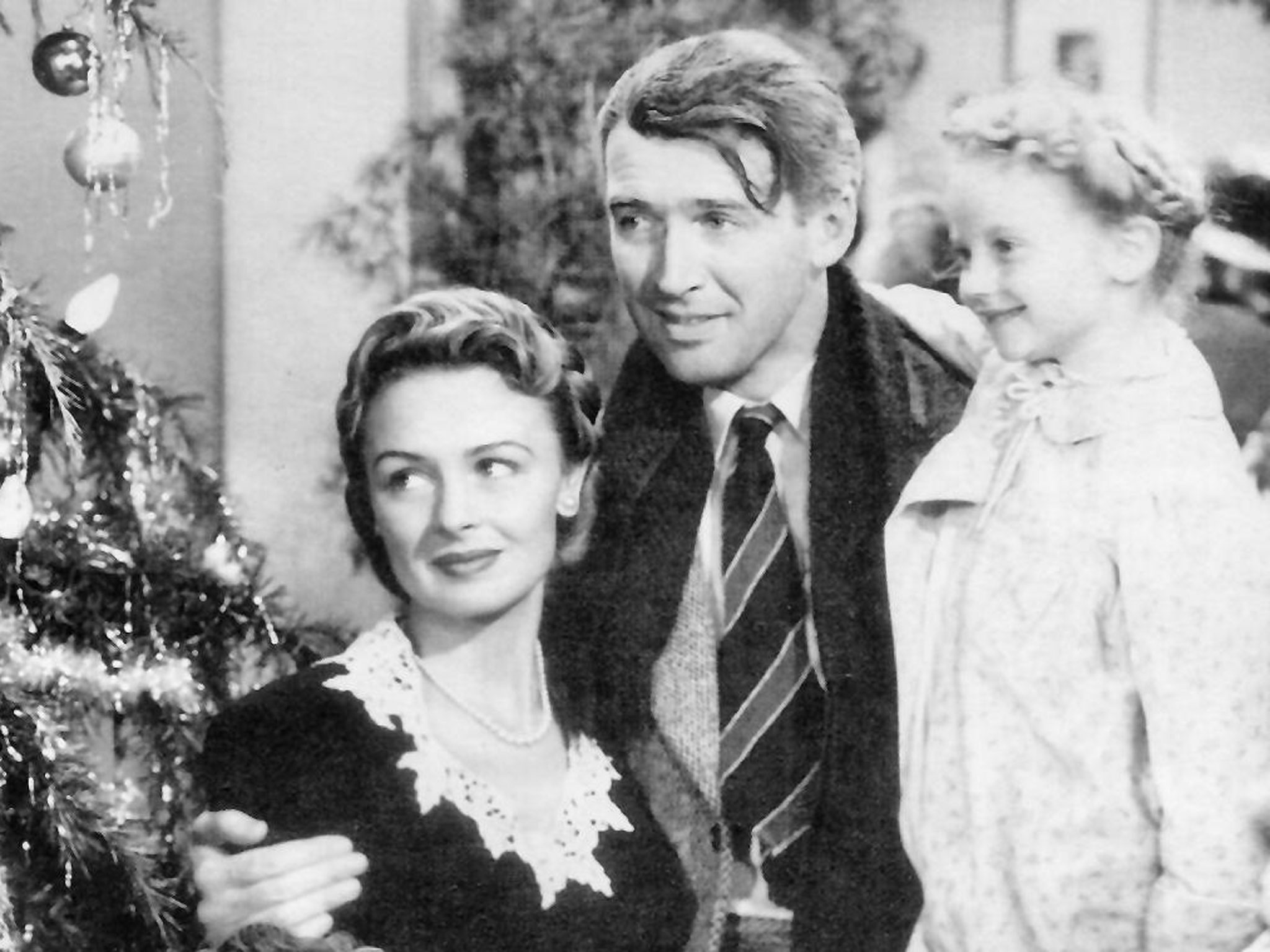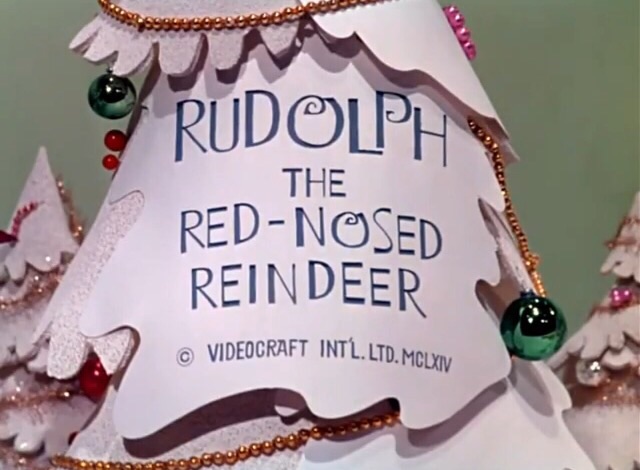|
Romeo Muller
Romeo Earl Muller, Jr. (August 7, 1928 – December 30, 1992) was an American screenwriter and actor most remembered for his screenplays for the Rankin/Bass holiday specials including ''Rudolph the Red-Nosed Reindeer, The Little Drummer Boy, Frosty the Snowman and Santa Claus is Coming to Town''. Early years Muller was born in the Bronx, New York, the son of Mildred (Kuhlmann) and Romeo Earl Muller. He was raised on Long Island. His talents in the arts were evident very early on. At age 11, he became a puppeteer at his grade school and eventually he began writing his own plays. His career in theatre began when he joined an acting troupe called "Theater Go Round" in Virginia Beach, Virginia with producer/friend Lesley Savage. At this time Romeo wrote plays such as ''Angel With The Big, Big Ears'' and ''The Great Getaway'', which eventually became the Rankin-Bass off Broadway play ''A Month Of Sundays''. Since Muller was a big man at 6'2", 300 pounds (1.88 m, 136 kg), ... [...More Info...] [...Related Items...] OR: [Wikipedia] [Google] [Baidu] |
Bronx, New York
The Bronx () is a borough of New York City, coextensive with Bronx County, in the state of New York. It is south of Westchester County; north and east of the New York City borough of Manhattan, across the Harlem River; and north of the New York City borough of Queens, across the East River. The Bronx has a land area of and a population of 1,472,654 in the 2020 census. If each borough were ranked as a city, the Bronx would rank as the ninth-most-populous in the U.S. Of the five boroughs, it has the fourth-largest area, fourth-highest population, and third-highest population density.New York State Department of Health''Population, Land Area, and Population Density by County, New York State – 2010'' retrieved on August 8, 2015. It is the only borough of New York City not primarily on an island. With a population that is 54.8% Hispanic as of 2020, it is the only majority-Hispanic county in the Northeastern United States and the fourth-most-populous nationwide. The Bronx is ... [...More Info...] [...Related Items...] OR: [Wikipedia] [Google] [Baidu] |
Off Broadway
An off-Broadway theatre is any professional theatre venue in New York City with a seating capacity between 100 and 499, inclusive. These theatres are smaller than Broadway theatres, but larger than off-off-Broadway theatres, which seat fewer than 100. An "off-Broadway production" is a production of a play, musical, or revue that appears in such a venue and adheres to related trade union and other contracts. Some shows that premiere off-Broadway are subsequently produced on Broadway. History The term originally referred to any venue, and its productions, on a street intersecting Broadway in Midtown Manhattan's Theater District, the hub of the American theatre industry. It later became defined by the League of Off-Broadway Theatres and Producers as a professional venue in Manhattan with a seating capacity of at least 100, but not more than 499, or a production that appears in such a venue and adheres to related trade union and other contracts. Previously, regardless of th ... [...More Info...] [...Related Items...] OR: [Wikipedia] [Google] [Baidu] |
Here Comes Peter Cottontail
''Here Comes Peter Cottontail'' is a 1971 Easter stop motion animated television special produced by Rankin/Bass Productions, currently distributed by Universal Television and based on the 1957 novel ''The Easter Bunny That Overslept'' by Priscilla and Otto Friedrich. The special also features Steve Nelson and Jack Rollins' Easter song " Here Comes Peter Cottontail". It was originally broadcast on April 4, 1971, on the ABC television network in the United States. In later years, it has appeared on CBS, Fox Family, and The CW. In 2005, it was followed by a computer-animated sequel, ''Here Comes Peter Cottontail: The Movie''. Plot Peter Cottontail is a young Easter Bunny who lives in April Valley where all the other Easter bunnies live and work, making Easter candy, sewing bonnets, and of course, decorating and delivering Easter eggs. Colonel Wellington B. Bunny, the retiring Chief Easter Bunny, names Peter his successor, despite his boasting, irresponsibility, and lying. Pet ... [...More Info...] [...Related Items...] OR: [Wikipedia] [Google] [Baidu] |
The Little Drummer Boy (film)
''The Little Drummer Boy'' is a stop motion television special produced by Rankin/Bass Productions, based on the song of the same name. It was first televised in Canada on December 15, 1968 on the CTV Television Network, followed four days later by its American nationwide release on NBC. A sequel was broadcast in 1976. Plot A young Jewish boy named Aaron lives a peaceful and happy life with his parents on a farm with their three farm animals, Samson the Donkey, Baba the Lamb, and Joshua the Camel. On his birthday, Aaron's parents give him a drum as a gift, to which the animals dance when he plays it. One night, bandits from the desert steal their livestock, kill Aaron's parents, and burn the farm down. Emotionally scarred from the tragedy, Aaron begins to hate all humanity. Because his drumming can make the three animals dance, Aaron is kidnapped and forced to join Ben Haramed's caravan with rather inept performers against his will. When performing in Jerusalem, Aaron become ... [...More Info...] [...Related Items...] OR: [Wikipedia] [Google] [Baidu] |
Rudolph The Red-Nosed Reindeer (television Special)
''Rudolph the Red-Nosed Reindeer'' is a 1964 Christmas stop motion animation, animated television special produced by Rankin/Bass Productions, Videocraft International, Ltd. (later known as Rankin/Bass Productions) and currently distributed by NBCUniversal Television Distribution (later known as NBCUniversal Syndication Studios). It first aired December 6, 1964, on the NBC television network in the United States and was sponsored by General Electric under the umbrella title of ''The General Electric Fantasy Hour''. The special was based on the 1949 Johnny Marks song "Rudolph the Red-Nosed Reindeer (song), Rudolph the Red-Nosed Reindeer" which was itself based on Rudolph the Red-Nosed Reindeer, the poem of the same name written in 1939 by Marks' brother-in-law, Robert L. May. Since 1972, the special has aired on CBS; the network unveiled a high-definition, digitally remastered version of the program in 2005, re-scanned frame-by-frame from the original 35 mm film elements. As ... [...More Info...] [...Related Items...] OR: [Wikipedia] [Google] [Baidu] |
Christmas Television Special
Christmas themes have long been an inspiration to artists and writers. A prominent aspect of Christian media, the topic first appeared in in literature and Christmas music. Filmmakers have picked up on this wealth of material, with both adaptations of Christmas novels, in the forms of Christmas films, Santa Claus films, and Christmas television specials. It also includes animation, comics, and children's books, including ''A Charlie Brown Christmas'', '' How the Grinch Stole Christmas!'', and ''Frosty the Snowman''. Films Many Christmas stories have been adapted to movies and TV specials, and have been broadcast and repeated many times on TV. Since the popularization of home video in the 1980s, their many editions are sold and re-sold every year during the holiday shopping season. Notable examples are the many versions of the ballet '' The Nutcracker'', the 1946 film ''It's a Wonderful Life'', and the similarly themed versions of Dickens' ''A Christmas Carol'', in which th ... [...More Info...] [...Related Items...] OR: [Wikipedia] [Google] [Baidu] |
General Electric Fantasy Hour
''Rudolph the Red-Nosed Reindeer'' is a 1964 Christmas stop motion animated television special produced by Videocraft International, Ltd. (later known as Rankin/Bass Productions) and currently distributed by NBCUniversal Television Distribution (later known as NBCUniversal Syndication Studios). It first aired December 6, 1964, on the NBC television network in the United States and was sponsored by General Electric under the umbrella title of ''The General Electric Fantasy Hour''. The special was based on the 1949 Johnny Marks song "Rudolph the Red-Nosed Reindeer" which was itself based on the poem of the same name written in 1939 by Marks' brother-in-law, Robert L. May. Since 1972, the special has aired on CBS; the network unveiled a high-definition, digitally remastered version of the program in 2005, re-scanned frame-by-frame from the original 35 mm film elements. As with '' A Charlie Brown Christmas'' and ''How the Grinch Stole Christmas'', ''Rudolph'' no longer airs ... [...More Info...] [...Related Items...] OR: [Wikipedia] [Google] [Baidu] |
National Broadcasting Company
The National Broadcasting Company (NBC) is an American English-language commercial broadcast television and radio network. The flagship property of the NBC Entertainment division of NBCUniversal, a division of Comcast, its headquarters are located at Comcast Building in New York City. The company also has offices in Los Angeles at 10 Universal City Plaza and Chicago at the NBC Tower. NBC is the oldest of the traditional "Big Three" American television networks, having been formed in 1926 by the Radio Corporation of America. NBC is sometimes referred to as the "Peacock Network," in reference to its stylized peacock logo, introduced in 1956 to promote the company's innovations in early color broadcasting. NBC has twelve owned-and-operated stations and nearly 200 affiliates throughout the United States and its territories, some of which are also available in Canada and Mexico via pay-television providers or in border areas over the air. NBC also maintains brand licensi ... [...More Info...] [...Related Items...] OR: [Wikipedia] [Google] [Baidu] |
Return To Oz (TV Program)
''Return to Oz'' is a 1964 animated television special produced by Crawley Films for Videocraft International. It first aired on 9 February 1964 in the United States on NBC's ''The General Electric Fantasy Hour'' block, then later aired on syndication from 1965 to the 1990s and on the Disney Channel in 1995. It was directed by F. R. Crawley, Thomas Glynn and Larry Roemer from a teleplay by Romeo Muller, who later wrote ''Dorothy in the Land of Oz''. This was the first special produced by Arthur Rankin Jr. and Jules Bass of Rankin/Bass Productions (the soon-to-be renamed Videocraft International). Crawley Films also produced the earlier 1961 animated series ''Tales of the Wizard of Oz'' and brought similar artistic character renditions to the special. There is also a 1985 live-action Disney film of the same name. In the special, Dorothy and Toto arrived back at Oz, after they received a letter from one of her Oz friends wanting her back, only to later be warned by a good wi ... [...More Info...] [...Related Items...] OR: [Wikipedia] [Google] [Baidu] |
Jules Bass
Julius Bass (September 16, 1935 – October 25, 2022) was an American director, producer, lyricist, composer, and author. Until 1960, he worked at a New York advertising agency, and then co-founded the film production company Videocraft International, later named Rankin/Bass Productions, with his friend, Arthur Rankin Jr. He joined ASCAP in 1963 and collaborated with Edward Thomas and James Polack at their music firm and as a songwriting team primarily with Maury Laws at Rankin/Bass. Early life Bass was born in Philadelphia on September 16, 1935. During his teenage years, he caught scarlet fever and nearly died from the disease. He attended New York University before being employed by an advertising agency. Career Bass started working with Arthur Rankin Jr. at the American Broadcasting Company in 1955. Rankin was an art director and Bass was a copywriter. The pair initially made television commercials, before moving onto television series and movies when they established Vi ... [...More Info...] [...Related Items...] OR: [Wikipedia] [Google] [Baidu] |
Arthur Rankin, Jr
Arthur is a common male given name of Brythonic origin. Its popularity derives from it being the name of the legendary hero King Arthur. The etymology is disputed. It may derive from the Celtic ''Artos'' meaning “Bear”. Another theory, more widely believed, is that the name is derived from the Roman clan '' Artorius'' who lived in Roman Britain for centuries. A common spelling variant used in many Slavic, Romance, and Germanic languages is Artur. In Spanish and Italian it is Arturo. Etymology The earliest datable attestation of the name Arthur is in the early 9th century Welsh-Latin text ''Historia Brittonum'', where it refers to a circa 5th to 6th-century Briton general who fought against the invading Saxons, and who later gave rise to the famous King Arthur of medieval legend and literature. A possible earlier mention of the same man is to be found in the epic Welsh poem ''Y Gododdin'' by Aneirin, which some scholars assign to the late 6th century, though this is still a mat ... [...More Info...] [...Related Items...] OR: [Wikipedia] [Google] [Baidu] |
Philco Theatre
Philco (an acronym for Philadelphia Battery Company) is an American electronics manufacturer headquartered in Philadelphia. Philco was a pioneer in battery, radio, and television production. In 1961, the company was purchased by Ford and, from 1966, renamed "Philco-Ford". Ford sold the company to GTE in 1974, and it was purchased by Philips in 1981. In North America, the Philco brand is currently owned by Philips. In other markets, the Philco International brand is owned by Electrolux. In the early 1920s, Philco made storage batteries, "socket power" battery eliminator units (plug-in transformers), and battery chargers. With the invention of the rectifier tube, which made it practical to power radios by electrical outlets, in 1928, Philco entered the radio business. They followed other radio makers such as RCA, Atwater-Kent, Zenith Electronics, Freshman Masterpiece, FADA Radio (Frank A. D'Andrea Radio), and AH Grebe into the battery-powered radio business. By the end of 1930, th ... [...More Info...] [...Related Items...] OR: [Wikipedia] [Google] [Baidu] |

.jpg)




